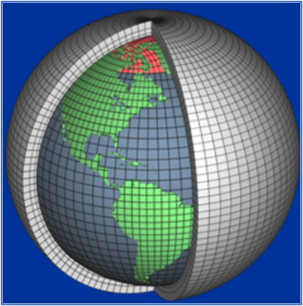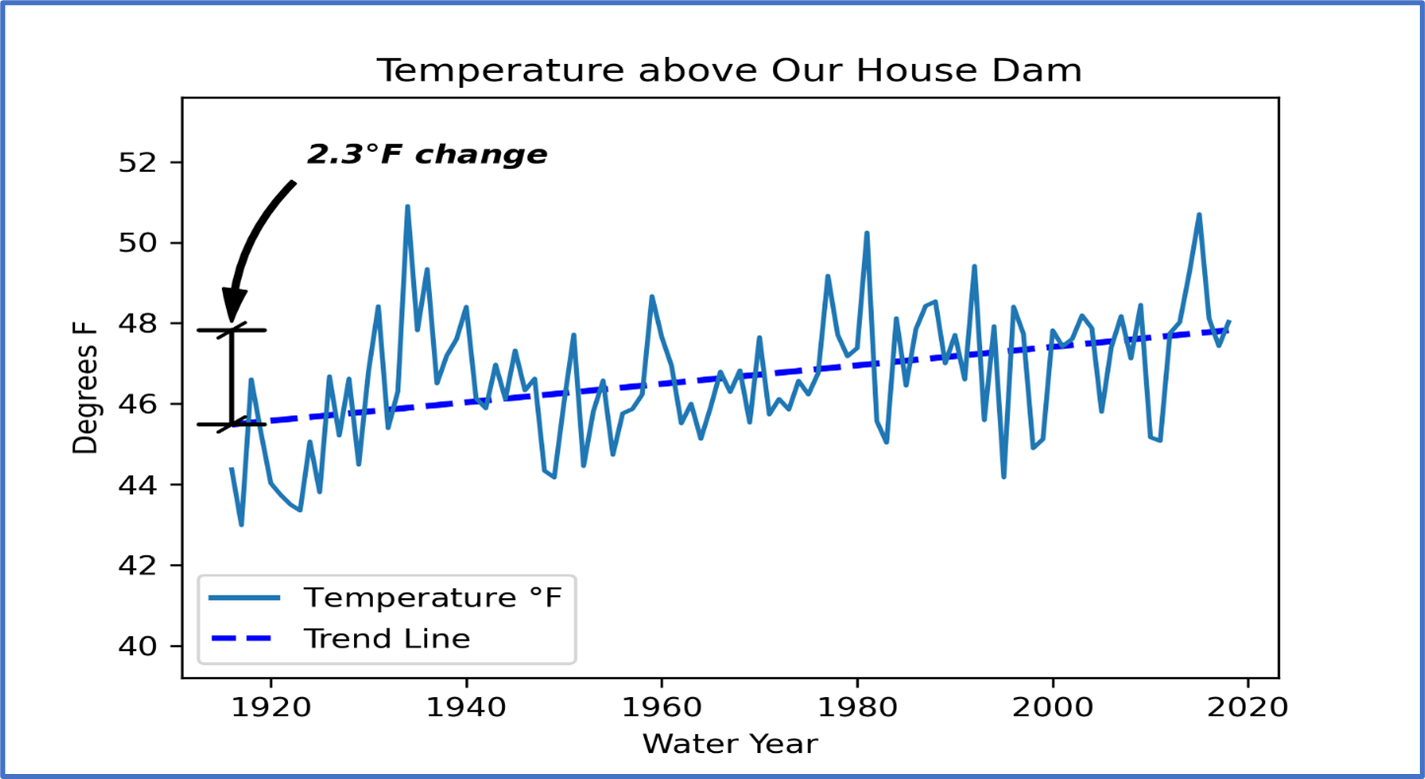Nevada Irrigation District Water and Climate Change
Planning for the future in the face of a climate crisis
Plan for Water takes on the challenge

Today, the Nevada Irrigation District (NID) faces the new challenge of planning for climate change impacts. NID is already seeing the impacts through increased temperatures and changes in precipitation patterns.
Understanding the potential impacts of climate change on future water supply is critical to ensuring a long-term reliable water supply. Given how much is at stake, NID has implemented the Plan for Water (PFW) project, which is a long-range decision tool to guide NID’s water management.
Through public collaboration, the PFW will develop a range of potential scenarios for NID’s Board of Directors to consider when determining the best ways to meet the community’s demand for water for the next 50 years.
What is climate change?
Climate change refers to long-term alteration in temperatures and weather patterns, specifically it relates to temperature and precipitation.
Due to NID’s operational reliance on winter snowpack in the Sierra, climate change has potential for a profound affect NID’s operations and water reliability.
Using science to model the future

To study climate change impacts on NID’s service territory and watershed, our expert scientific consultant team uses Global Climate Models (GCMs). GCMs are 3D mathematical representations of the major world-wide climate components such as the atmosphere, land surface, ocean, and sea ice. GCMs simulate how these components interact, resulting in scientifically based projections of how these climate interactions may happen. To make sure the models work, scientists have applied projections to past known conditions for accuracy.
For the PFW, the consultant team has selected seven GCMs that best represent the California climate. Each GCM simulated up to three different scenarios that examine potential pathways to projected future climate conditions.
A total of eighteen different scenarios were analyzed. From these, three scenarios were identified for further analysis and understanding. Two of the selected scenarios represent hydrological bookends: the low bookend (dryer hydrology) and the high bookend (wet hydrology). The third scenario represents a median condition (a middle-of-the-road hydrologic climate. Hydrology data uses the “water year,” which runs from Oct 1 to Sep 30. Therefore, the 2023 water year begins on Oct 1 of 2022 and ends on Sep 30 of 2023.
Temperature – Higher temps in NID watersheds
Global warming has raised global surface temperature about 2° F higher than those temperatures experienced in the 1900s, as shown in Figure 3.
Generally, an increase in temperatures will make the soils drier and increase evapotranspiration resulting in higher water losses and reduced inflows.

Higher Temperatures in the NID Watershed
Higher temperatures of global warming are also occurring in the NID watershed. Global warming is also local warming.
Temperatures up from 1920 - 2020

Average temperatures are projected to increase in the rainy season and remain higher than historical temperatures throughout the entire year.
Snow – less snowpack that melts faster
NID’s mountainous upper watershed acts as a natural reservoir, releasing snowmelt runoff during the spring and summer months.

Climate change impacts will result in less snowpack and faster melting of the snowpack. The NID system was designed and is currently operated to take advantage of the snow cycle and the timing of the resulting runoff.
A large portion of the NID watershed is above the 5,000-foot elevation where snow falls during winter storms. This area is impacted by higher winter and spring temperatures.
Projections indicate that some of what currently falls as snow will fall as rain, reducing the future average snowpack and snowmelt.
This reduction in annual average snowmelt is an important consideration because historically, NID has used this snowmelt runoff to meet client demands.
The combination of reduced snowpack and prolonged dry periods exacerbates future water scarcity issues.
Future Articles
The next article will focus on the technological tools used to analyze potential strategies for the PFW. The third article will discuss how NID is looking at climate change hydrology, water supply, and demands for both historical and projected conditions. The final article will focus on potential solutions the PFW may use.
Planned Articles:
• Article 1 – NID Water and Climate Change
• Article 2 – Technological Tools
• Article 3 – Learning from the Past and Projecting to the Future
• Article 4 – The Strategic Plan to a Dependable Water Supply
